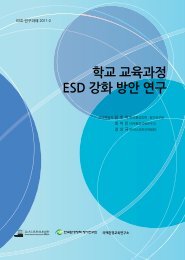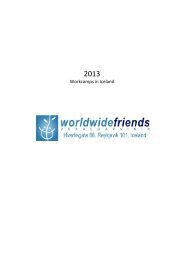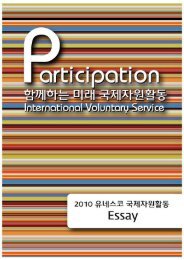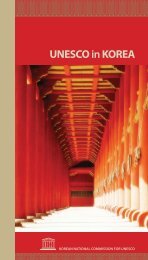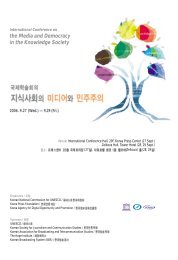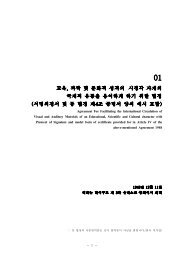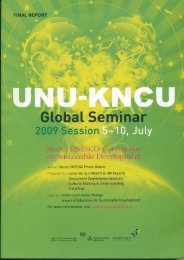íëìë³´ë2012문íì ë°ì ë¼ì´ëí ì´ë¸.pdf - ì ë¤ì¤ì½íêµììí
íëìë³´ë2012문íì ë°ì ë¼ì´ëí ì´ë¸.pdf - ì ë¤ì¤ì½íêµììí
íëìë³´ë2012문íì ë°ì ë¼ì´ëí ì´ë¸.pdf - ì ë¤ì¤ì½íêµììí
Create successful ePaper yourself
Turn your PDF publications into a flip-book with our unique Google optimized e-Paper software.
Presentation<br />
Culture and Development Strategy in the Post-MDGs Era<br />
Kwak, Jae Sung<br />
Graduate School of Pan-Pacific International Studies, Kyunghee University<br />
I. Introduction<br />
The traditional cultures of developing countries have long been considered developmental<br />
“constraints” or “relaxation.” Since the 1970s, however, there have been growing movements<br />
primarily in Africa and Latin America to emphasize the traditional ways of life, place value<br />
on indigenous cultures and languages, and bring new life to the economy-centric<br />
development model. In particular, the Declaration of the World Cultural Policies of 1982<br />
served as an opportunity for culture to be reestablished as a concept that encompasses social<br />
organizations, values, and belief systems. It also started drawing attention to culture as a<br />
useful tool in defining the identity of groups and their relationship to economic and social<br />
development. With sustainable development rapidly gaining importance starting in the late<br />
1980s, it became essential 1 to understand the value of cultural factors and cultural heritage<br />
for a balanced social and economic development. Held in 2012, the Rio+20 Summit also<br />
reached an agreement: “Green growth policies for sustainable development and poverty<br />
eradication should preserve the identity and cultural heritage of indigenous people and local<br />
communities to improve their levels of welfare.”<br />
Nevertheless, these “cultural” elements have not yet been developed into a highly<br />
institutionalized global discourse, unlike the issue of “environment and climate change” that<br />
has successfully built an independent system of global governance―through the United<br />
Nations Framework Convention on Climate Change (UNFCCC) and other institutional<br />
frames―after being highlighted as a shared challenge for the world through the publication<br />
of Our Common Future (Brundtland Report) in 1987 and the Declaration on Environment<br />
and Development at the Rio Summit in 1992 2 . In other words, while the international<br />
community has successfully incorporated the importance of a socio-cultural approach into the<br />
<br />
1 Blake, Janet (2012). "Historical significance of the 2003 UNESCO Convention: Why intangible heritage<br />
becomes a global issue," 2012 International Conference for the Protection of Intangible Heritage: Creative<br />
Values of Intangible Heritage and Sustainable Development. 5 October 2012. p. 167.<br />
2 The key driving force for building a global governance system on environmental and climate change issues<br />
has been their characteristics as challenge and opportunity (“crisis and greedy”). Environmental issues have<br />
created the sense of crisis that these issues may result in a common crisis for humanity as a whole, while<br />
providing unlimited business opportunities such as environmental business and CDM. Therefore, environmental<br />
discourse can be very easily turned into global issues.



